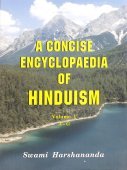Dharmaskandha, Dharma-skandha: 6 definitions
Introduction:
Dharmaskandha means something in Buddhism, Pali, Hinduism, Sanskrit. If you want to know the exact meaning, history, etymology or English translation of this term then check out the descriptions on this page. Add your comment or reference to a book if you want to contribute to this summary article.
In Buddhism
Mahayana (major branch of Buddhism)
Source: Wisdom Library: Maha Prajnaparamita SastraDharmaskandha (धर्मस्कन्ध) by Śāriputra refers to one of the six parts of the Ṣaṭpādābhidharma which is the Jñānaprasthāna and the six annexed treatises that are its continuation (anucāra) or ‘feet’ (cf. Kośa, I, p. 4, n. 4). There is a list of them in Sanskrit in the Kośavyākhyā, p. 9, and in Tibetan in Buston, I. p. 49 and Taranātha, p. 296. [...] Along with the Jñānaprasthāna, these are the seven treatises of the Sarvāstivādin Abhidharma. [...]

Mahayana (महायान, mahāyāna) is a major branch of Buddhism focusing on the path of a Bodhisattva (spiritual aspirants/ enlightened beings). Extant literature is vast and primarely composed in the Sanskrit language. There are many sūtras of which some of the earliest are the various Prajñāpāramitā sūtras.
General definition (in Buddhism)
Source: Wisdom Library: Dharma-samgrahaDharmaskandha (धर्मस्कन्ध) is another name for Lokottaraskandha and refers to the “five super-mundane components” as defined in the Dharma-saṃgraha (section 23). The Dharma-samgraha (Dharmasangraha) is an extensive glossary of Buddhist technical terms in Sanskrit (e.g., anāsrava-skandha). The work is attributed to Nagarjuna who lived around the 2nd century A.D. Dharmaskandha is also known by the name Lokottaraskandha, Anāsravaskandha and Aśaikṣaskandha.
Languages of India and abroad
Sanskrit dictionary
Source: Cologne Digital Sanskrit Dictionaries: Edgerton Buddhist Hybrid Sanskrit DictionaryDharmaskandha (धर्मस्कन्ध).—m. (= Pali dhammakkhandha, on which see Childers, and compare Kern's note in Transl. of Saddharmapuṇḍarīka, [Sacred Books of the East] 21, p. 241), article or item of the doctrine, of which there are said (also in Pali) to be 84,000: Mahāvyutpatti 1417 (°dhaḥ); dharmaskandhasahasrāṇi caturaśīti dhārayet Saddharmapuṇḍarīka 254.11 (verse; so read with most mss. and WT, as required by meter, contrary to note in KN, whose text is unmetrical).
Source: Cologne Digital Sanskrit Dictionaries: Monier-Williams Sanskrit-English Dictionary1) Dharmaskandha (धर्मस्कन्ध):—[=dharma-skandha] [from dharma > dhara] m. ‘l°-collection’, Name of [work]
2) [v.s. ...] chief section of a [work] relating to laws, [Śaṃkarācārya]
[Sanskrit to German]
Sanskrit, also spelled संस्कृतम् (saṃskṛtam), is an ancient language of India commonly seen as the grandmother of the Indo-European language family (even English!). Closely allied with Prakrit and Pali, Sanskrit is more exhaustive in both grammar and terms and has the most extensive collection of literature in the world, greatly surpassing its sister-languages Greek and Latin.
See also (Relevant definitions)
Partial matches: Dharma, Skandha, Tarma.
Full-text: Ashaikshaskandha, Anasravaskandha, Lokottaraskandha, Vagguhya, Shatpadabhidharma, Vaibhashika, Devadatta.
Relevant text
Search found 5 books and stories containing Dharmaskandha, Dharma-skandha; (plurals include: Dharmaskandhas, skandhas). You can also click to the full overview containing English textual excerpts. Below are direct links for the most relevant articles:
Maha Prajnaparamita Sastra (by Gelongma Karma Migme Chödrön)
II. The pratisaṃvids according to the Mahāyāna < [Part 3 - The four unhindered knowledges]
Part 1 - Description of the vihāras < [Chapter V - Rājagṛha]
Appendix 2 - Definition of the srotaāpattiphala (the fruit of entry into the stream) < [Chapter XLIX - The Four Conditions]
Abhidharmakośa (by Leo M. Pruden)
Buddhist Monastic Discipline (by Jotiya Dhirasekera)
The Markandeya Purana (Study) (by Chandamita Bhattacharya)
Divisions of Āśrama (Introduction) < [Chapter 2]
A History of Indian Philosophy Volume 1 (by Surendranath Dasgupta)
Part 10 - The Schools of Theravada Buddhism < [Chapter V - Buddhist Philosophy]
Related products
